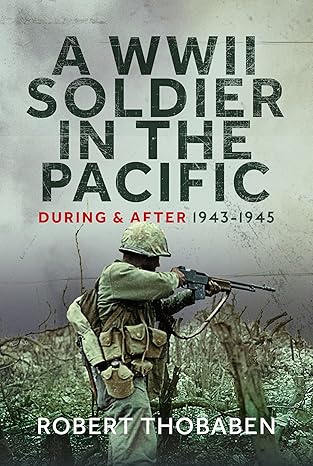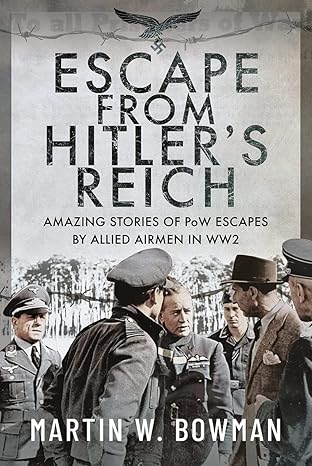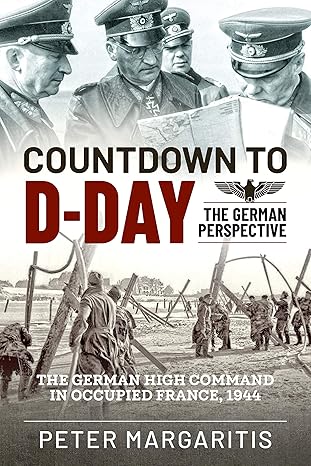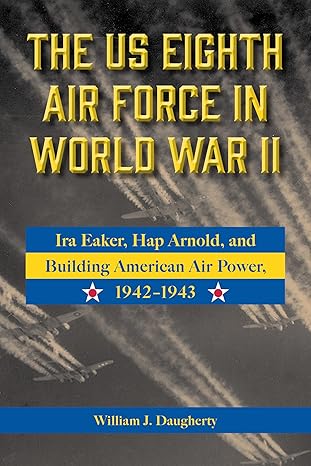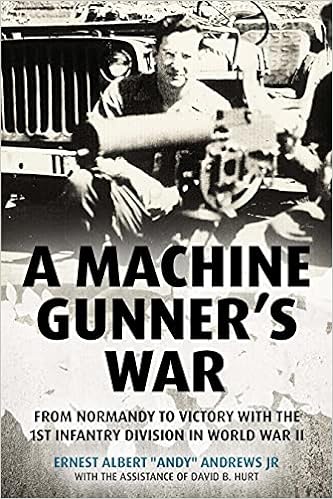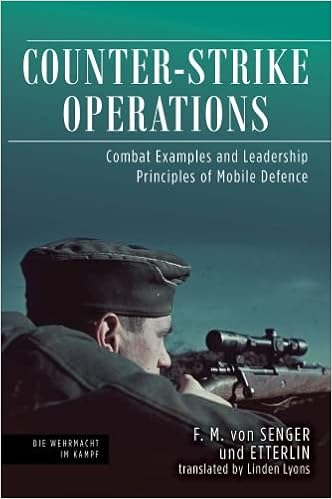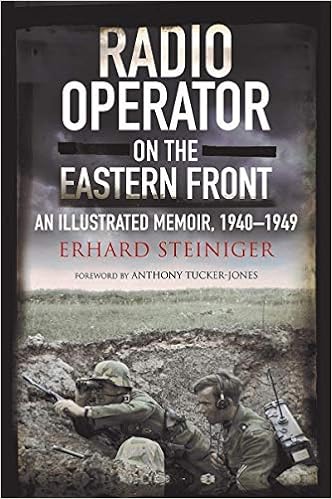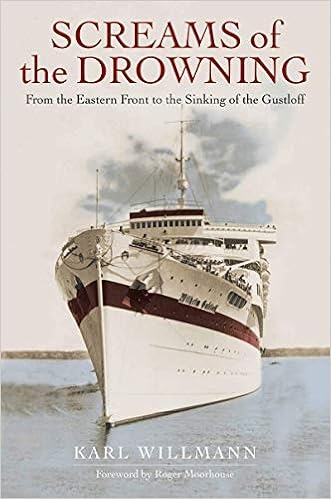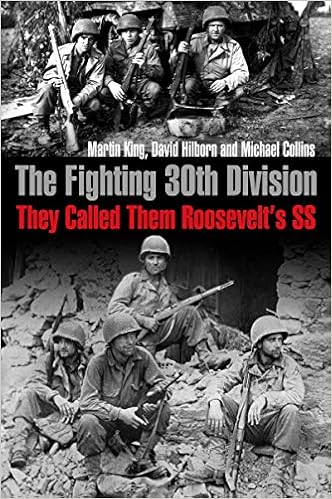The Battle of Surigao Strait: The Last Crossing of the T
By Walter S. Zapotoczny
In late 1944, the Second World War in the Pacific was going badly for Japan. The American military was determined to retake the Philippines. The U.S. Pacific fleet had moved to the Mariana Islands in support of General MacArthur's army, which had landed on the south-west coast of Leyte in October. The U.S. 7th Fleet, commanded by Admiral Thomas C. Kinkaid, was near the Surigao Strait off Leyte. The U.S. Third Fleet, under Vice Admiral Halsey had been divided into four task groups, each under Vice Admiral McCaine, Rear Admirals Sherman, Bogan and Davison. These task groups were stationed to operate off Luzon. Sherman's group in the north, Davison's group in the south and Bogan's in the middle. McCain's group, which had five carriers, was ordered to Ulithi for re-supply.
The Japanese strategy in the defense of Leyte was to entrap the U.S. Navy's 7th Fleet by its naval forces from the north in the Sibuyan Sea, and with assault from the south from Surigao Strait. Admiral Halsey and the U.S. Navy's 3rd Fleet was to be lured northwards, away from the Leyte Strait by a decoy carrier force. The Japanese plan, named Sho-Go, called for the convergence of their two battleship forces from north and south on MacArthur's landing beach, catching the U.S. troops and invasion ships in a pincers movement. To execute this strategy, the Imperial Japanese Navy formed four task forces under the overall command of Vice Admiral Jisaburo Ozawa, who himself was to lead the decoy carrier force with two battleships, three light cruisers and nine destroyers. The southern and weaker of these battleship forces, commanded by Rear Admiral Nishimura, would penetrate through Surigao Strait just south of Leyte, tying up the American battleships while the more powerful of the two battleship forces, the Central Force under the command of Vice Admiral Kurita, would penetrate through San Bernardino Strait, sail down the coast of Samar, and fall on the American invasion fleet from the north-east. Admiral Shima with cruisers and destroyers acting as a second striking force would follow Nishimura into the Surigao Strait.[1] The Battle of the Surigao Strait was one of the four engagements that made up the Battle of Leyte Gulf, which was the biggest naval battle fought in the Pacific Theatre during WWII. It was also the last time the tactic of "crossing the T" was used in battle.[2]
The commander of the American ships facing Nishimura was Admiral Jesse Oldendorf. In his book Sea of Thunder, Evan Thomas describes Oldendorf as, "an unapologetic practitioner of the American war of war. He believed in massed firepower and overwhelming force." It was his audacity, the use of the basic philosophies of war, and the use of the classic naval tactic of crossing the T that defeated the Japanese at Surigao Strait. This played a significant role in winning the Battle of Leyte Gulf and in so doing, helping to secure the beachheads of the U.S. Sixth Army on Leyte against Japanese attack from the sea.
As Admiral Nishimura steamed toward the Surigao Strait he knew that his chances for victory were slim. From his flag ship the Yamashiro, he evaluated the force facing him and knew that the success of the Japanese depended on his commitment to the Sho-Go Plan. He had to tie up the American fleet committed to his destruction and spare Admiral Kurita's Center Force. Nishimura counted on the battleships Fuso and the Yamashiro which had spent most of the war in Japan's Inland Sea on training missions.[3] At 0905 on 24 October, Nishimura's Force was sighted by aircraft from the Third Fleet carriers Enterprise and Franklin of Rear Admiral Davison's task group. Shima's Second Striking Force was located by a US Army Air Force bomber at 1155. The search/strike element from Davison's group which first located Nishimura attacked at 0918 and inflicted bomb hits on the flagship Yamashiro and on the destroyer Shigure, but these hits caused little damage and Nishimura continued his advance undeterred. Neither Nishimura nor Shima's received any further air attacks during daylight on 24 October since Admiral Halsey had transferred Admiral Davison's fast carrier group to the attack on Admiral Kurita's Centre Force, and the Seventh Fleet's escort carriers were too busy with their duties around Leyte Gulf to be able to launch attacks on the Japanese forces. Admiral Kinkaid and his staff correctly surmised that the Japanese Southern Force would attempt to reach Leyte Gulf through Surigao Strait. Shortly after noon Kinkaid alerted every ship of the Seventh Fleet to prepare for a night action. Rear Admiral Oldendorf, commanding Kinkaid's Bombardment and Fire Support Group, was ordered to the northern entrance of Surigao Strait with his very powerful force, and to prepare to meet the enemy ships. After Rear Admiral Oldendorf had formed his battle plan he called Rear Admirals Weyler, commanding the battle line, and Berkey, commander of the Right Flank cruisers and, destroyers aboard his flagship USS Louisville for a conference to discus the plan and to insure all commanders understood his intent.[4]
On the afternoon of 24 October, thirty-nine 7th Fleet torpedo-boats moved at high speed, through Leyte Gulf and Surigao Strait, into the Mindanao Sea south of Leyte, and by dusk were in position on their patrol-lines. As 7th Fleet had no night patrol aircraft, and the Third Fleet's night carrier Independence had been taken northwards with the rest of the Third Fleet to attack the Japanese Northern Force, Oldendorf was dependent on the motor-torpedo boats for advance warning of the Japanese approach. Nishimura, advancing towards Surigao Strait, at about 1830 received Kurita's signal that the latter's powerful Centre Force had been delayed by heavy air attacks in the Sibuyan Sea, which meant the Nishimura could not hope to be supported by Kurita in his attack on Leyte Gulf. As he approached Leyte, Nishimura sent Mogami and three destroyers ahead to reconnoiter. The PT boats' first contact was with the battleships rather than with the Mogami group though. At 2236 PT-131 of Section One off the island of Bohol made visual contact at a range of three miles, and shortly after were sighted by Shigure. At 2254 Nishimura ordered an emergency turn towards the boats and at 2256 the Japanese ships turned on their searchlights and opened fire. The boats attempted to close in for a torpedo attack but were driven off by the Japanese gunfire, two of them having been hit and damaged. PT-130 of Section One closed with the nearby Section Two and got PT-127 of the latter section to relay a contact report. This report reached Oldendorf at 0026 on October 25 and was the first concrete information of the enemy's position received by the Admiral since 1000 the previous morning. The heavy cruiser Mogami and her three accompanying destroyers got past Sections One and Two undetected. At 2230 Nishimura radioed Kurita and Shima that he was advancing as scheduled while destroying enemy torpedo boats. At about 0400 Nishimura's heavy ships joined up again with the Mogami group, and at about 0100 his force assumed its line formation for the approach to Leyte Gulf. In the lead were two destroyers. Four kilometers behind them were the two battleships and the cruiser Mogami in line ahead, with a destroyer on each flank. The last action between the motor-torpedo boats and the Japanese force ended at 0213 on 25 October. As the battle between Nishimura and the PT boats was ending the battle between his force and the American destroyers was beginning.[5]
The first destroyer grouping to attack Nishimura was that of Captain Jesse Coward, who led three ships of Destroyer Squadron 54, the Remey, McGowan and Melvin, down the eastern side of the strait while two more, the McDermut and Monssen, hugged the western shore. Behind Coward followed six destroyers from Captain McManes's Destroyer Squadron 24, steaming south in two sections: the Hutchens, the Daly, and the Bache were closest to the Leyte Island shore. The HMAS Arunta, an Australian destroyer assigned to the squadron, followed by the Killen and the Beale, cruised off their port quarter. Finally, Captain Smoot's nine-ship Destroyer Squadron 56 would attack in three columns. The Robinson, the Halford, and the Bryant would proceed down the eastern side. The Newcomb, the Richard P. Leary, and the Albert W. Grant would go down the middle of the strait, head-on, firing, then looping back. The Heywood L. Edwards, the Leutze, and the Bennion would attack on the west site of the strait.[6] As Nishimura's force steamed filed up the center of the strait, the destroyers executed their battle plan firing salvos of torpedoes at ranges of about four miles, and then turning and speeding away before the Japanese guns could find them. Nishimura's ships quickly turned on their searchlights and illuminated the destroyers. The destroyers escaped the enemy fire by zigzagging and throwing up smoke screens. The results of the destroyer attacks were devastating to the Japanese. Two of their ships were hit by the first salvo of torpedoes. The attacks continued until the battleship Fuso blew up and split in two. Nishimura's flagship, the battleship Yamashiro took hits, and two of his destroyers were sunk. However, Nishimura continued to advance as Destroyer Squadrons 24 and 56 pulled clear and Admiral Oldendorf prepared to "cross the enemy's T."[7]
The battleships and cruisers of Oldendorf's force were steaming across the northern end of Surigao Strait, at the southern entrance to Leyte Gulf, roughly between Hibuson Island and Leyte. On the eastern flank of the disposition, under Oldendorf's direct command, were the heavy cruisers Louisville, Portland and Minneapolis, and the light cruisers Denver and Columbia. On the right flank, under Rear Admiral Berkey, were the Australian Navy's heavy cruiser Shropshire and the light cruisers Phoenix and Boise. In the centre of this disposition was a battle line, consisting of six battleships, the West Virginia, Tennessee, California, Maryland, Mississippi, and Pennsylvania under the command of Admiral Weyler. The enemy column now reduced to one battleship, one heavy cruiser, and one destroyer, was steaming into a trap. It was a very short vertical to a very broad T, and Oldendorf was about to cross it, as Admiral Togo had done to Rozhdestvensky in 1905 at the Battle of Tsushima Strait, and as naval officers who studied the tactics had since hoped to accomplish.[8]
At 0323, radar screens registered the Japanese disposition. Ten minutes later the range then being 33,000 yards, Admiral Weyler signaled the battle line to open fire at 26,000 yards, believing that if he waited any longer his ships would lose their initial advantage of having five salvoes of armor-piercing ammunition immediately available. Admiral Oldendorf ordered all cruisers to open fire at 0351 when Louisville's range to the nearest target was 15,600 yards. Yamashiro slowed to 12 knots at 0352 but continued on course firing at visible targets, for she had no fire control radar. Nishimura was steaming boldly into a terrific concentration of gunfire, supported only by heavy cruiser Mogami and destroyer Shigure on his starboard quarter. His last message was to Fuso at 0352 asking her to make top speed. Admiral Nishimura never learned that Fuso had been mortally torpedoed by the American destroyers and was no longer in column. There was no reply from that sinking battleship. Busy taking fire, Nishimura never informed Shima of what was happening.[9]
West Virginia, Tennessee and California, equipped with the latest Mark-8 fire control radar, had a firing solution in main battery plot and were ready to shoot long before the enemy came within range. These three were responsible for most of the battle line action. West Virginia opened fire at 0353, and got off 93 rounds of 16-inch AP before checking. Tennessee and California, starting at 0355, shot 69 and 63 rounds of 14-inch respectively, fired in six-gun salvos in order to conserve their limited supply. The other three battleships, equipped with Mark-3 fire control radar, had difficulty finding a target. Maryland picked it up by ranging on West Virginia's shell splashes, and got off 48 rounds of 16-inch in six salvos, starting at one minute before 0400. Mississippi fired a single salvo, and Pennsylvania never managed to locate a target and took no part in the action. At 0408 Mississippi got on the big target Yamashiro and fired a full salvo. Admiral Oldendorf had just ordered Cease Fire, but she had not yet got the word. Thus, Mississippi fired the last major-caliber salvo of the battle. While Japanese sailors worked frantically to make temporary repairs they returned fire, Mogami for a few minutes and Yamashiro longer. The Japanese battleship directed her main battery fire at the enemy cruisers, while her secondary battery fired at the retiring torpedo squadrons. Neither one had any effect.[10]
The battle line changed course from 120 to 270 degrees at 0402 by simultaneous turns, and continued to fire as it steamed west. Since this maneuver closed the battleships' range, the volume of fire became even greater. At 0409 Admiral Oldendorf, on receiving word that Grant and her sisters were being hit by friendly fire, ordered all ships to cease fire to give the destroyers' time to retire. In spite of the punishment Yamashiro had been taking, she increased speed to 15 knots, turned 90 degrees left, and began to retire southward. At 0419 she capsized and sank, taking down Admiral Nishimura and all but a few members of the crew. The heavy cruiser Mogami turned left at 0353 when the shooting began, launched torpedoes at 0401, and at the same time received gunfire from Captain MacManes's destroyers to the southwestward. She caught fire at 0356, turned south to retire, increased speed and made smoke, but received many more hits. At 0418, Admiral Weyler ordered Mississippi, Maryland and West Virginia to turn due north, away from the enemy. Admiral Chandler ordered the other battleships westward. The northward turn took half of battle line out of the fight. When Admiral Oldendorf ordered all ships to resume fire at 0419, no target was left on their radar screens. The ten minute check-fire allowed Shigure and Mogami to retire south. Even so, by twenty minutes after four on 25 October, with only another twenty minutes to go before the first glimmerings of dawn appeared over Dinagat Island, Nishimura's force, which had counted on being off Dulag by that time, was done for. Of the two battleships only the burning stern of Fuso was still afloat, three destroyers were sunk or stopped by torpedoes in mid-strait, and a badly-damaged heavy cruiser and a damaged destroyer were retiring. Of Admiral Oldendorf force, only destroyer Grant had been hit and that mostly by friendly fire.[11]
At midnight, when he received the message that Nishimura's force was in action with American torpedo-boats, Shima and his Second Striking Force were about forty miles astern of Nishimura. For three hours Shima sailed towards Leyte unmolested. Then, at about 0315, PT-134 made a torpedo attack, but missed. Shortly afterwards PT-137 attacked Shima's force, firing at a destroyer which at the time had reversed course to take station astern of Shima's formation. PT-137's torpedoes missed the destroyer by chance one of them struck the light cruiser Abukuma, which fell out of formation. As Shima's group, consisting now of the two heavy cruisers and four destroyers, proceeded northwards, what appeared to be two large burning ships were sighted. Shima took these to be the Fuso and Yamashiro. In fact they were the two halves of the torpedoed Fuso. At 0420, Shima still thought he was speeding up to the support of Nishimura, who had just gone down with his ship. Heavy cruiser Ashigara was astern of Nachi, and the four destroyers were ranging ahead northwesterly. All six ships were ready to fire torpedoes as soon as they found a target. Shima observed on his radar screen what he supposed to be two enemy ships. At 0424 he ordered both cruisers to attack these targets with torpedoes. They turned right to course and fired eight torpedoes each. This was Second Striking Force's only contribution to the battle. Torpedoes must have run erratically, since at least two of them were recovered from Hibuson Island later. Shima did not know what had happened to Nishimura, but guessed the worst, and the heavy smoke made by American destroyers curtained his view northward. He decided to temporarily retire and await development of events. His destroyers, which had now penetrated farther north than the cruisers without seeing anything to shoot at, were recalled about 0425. At the same time he sent a radio dispatch to Vice Admiral Mikawa and to all SHO forces that his force has concluded its attack and is retiring from the battle area to plan subsequent action.
The burning Mogami was encountered and believing her to be dead in the water, Captain Kanooka of Nachi turned to clear, but Mogami was actually moving slowly south and the two heavy cruisers collided at 0430. Nachi's stern was badly damaged with some flooding and her speed was reduced to 18 knots, Mogami managed to turn up enough speed to fall in with Shima's column, now heading south at Nachi's best speed and Shima ordered Shigure to join. She had some difficulty in so doing as her steering engine was out of order. She come in contact with Lieutenant Gleason's Motor Torpedo Boat section at 0455, attacked, and made one slight hit on PT-321. By five in the morning on 25 October, with an hour and a half to go before sunrise, the Japanese Southern Force was broken up and in retreat, with Admiral Oldendorf's force in pursuit. The Battle of Surigao Strait was over with the Americans and Admiral Oldendorf the clear winner.[12]
Today, all great nations recognize principles of war and incorporate them in their doctrine. The lists vary from nation to nation. In the Western World, the accepted principles are essentially a post-Napoleonic conception, advanced by Clausewitz, the great Prussian philosopher of war in the early nineteenth century, and his contemporary, Jomini, the well-known French general and theorist. These principles are common to ground, as well as, naval operations. The United States Army recognizes nine principles and includes them in its Field Manual 100-5. Their proper application, the Army holds, is essential to the exercise of effective command and to the successful conduct of military operations. These nine principles provide an effective model to analyze the Battle of Surigao Strait.[13]
The first of the nine principles is Objective. The FM 100-5 definition states, "Every military operation must be directed toward a clearly defined, decisive, and attainable objective. The ultimate military objective of war is the destruction of the enemy's armed forces and his will to fight. The objective of each operation must contribute to this ultimate objective. Each intermediate objective must be such that its attainment will most directly, quickly, and economically contribute to the purpose of the operation. The selection of an objective is based upon consideration of the means available, the enemy, and the area of operations. Every commander must understand and clearly define his objective and consider each contemplated action in light thereof."[14] Once planes from Admiral Halsey's carriers spotted Admiral Nishimura's fleet making for the Surigao Strait and Admiral Kurita's large fleet coming through the San Bernardino Strait, it was obvious to Admiral Kinkaid that the Japanese planed to converge in Leyte Gulf to attack MacArthur's invasion ships. He immediately sent world to Admiral Oldendorf to take his fleet to the north side of the Surigao Strait and prepare for a night battle. The objective was to engage and destroy the enemy force.[15]
The second principle of war to examine in the context of the Battle of Surigao is Offensive. Offensive action is defined in FM 100-5 as,"… that action that is necessary to achieve decisive results and to maintain freedom of action. It permits the commander to exercise initiative and impose his will upon the enemy; to set the pace and determine the course of battle; to exploit enemy weaknesses and rapidly changing situations, and to meet unexpected developments. The defensive may be forced on the commander, but it should be deliberately adopted only as a temporary expedient while awaiting an opportunity for offensive action or for the purpose of economizing forces on a front where a decision is not sought. Even on the defensive the commander seeks every opportunity to seize the initiative and achieve decisive results by offensive action."[16] Admiral Oldendorf formulated an offensive plan that utilized his destroyer's potent hitting power. His PT boats would attack first then withdraw under the cover of darkness, to lurk nearby to report the Japanese positions to. The destroyers would then attack the Japanese fleet in three squadrons, ranging down both the eastern and western sides of the narrow strait to launch torpedoes at the enemy from the flanks. Each destroyer carried ten torpedoes and Oldendorf and his commanders hoped they would be devastating. The results of the destroyer attacks were devastating to the Japanese. Two of their ships were hit by the first salvo of torpedoes. The attacks continued until the battleship Fuso blew up and split in two. Nishimura's flagship, the battleship Yamashiro took hits, and two of his destroyers were sunk.[17] Clearly, the audacious plan devised by Admiral Oldendorf met the definition of Offensive.
Mass is the third principle to be examined. It is defined as, "Superior combat power must be concentrated at the critical time and place for a decisive purpose. Superiority results from the proper combination of the elements of combat power. Proper application of the principle of mass, in conjunction with the other principles of war, may permit numerically inferior forces to achieve decisive combat superiority."[18] Oldendorf's plan for massing fire power involved his six battleships, under the tactical control of Rear Admiral Weyler, cruising single file across a fifteen nautical-mile stretch of water at the northern outlet of the strait. Steaming parallel to them, five miles to their south, would be eight cruisers under Rear Admiral Berkey, three to Weyler's right and three to his left. Straddling the exit of the strait, the battle line would be poised to finish off any of Nishimura's ships that survived the destroyer attacks. Salvages from the wreckage of Pearl Harbor most of the battleships were equipped with modern fire control systems. They would, as the Naval War College textbooks dictated, cross the T of the enemy fleet, thereby bringing more guns to bear.[19] With overwhelming force, Oldendorf's classic maneuver clearly satisfied the principle of Mass.
The fourth of the nine principles is Economy of Force. FM 100-5 defines it as, "Skillful and prudent use of combat power will enable the commander to accomplish the mission with minimum expenditure of resources. This principle is the corollary of the principle of mass. It does not imply husbanding but rather the measured allocation of available combat power to the primary task as well as secondary tasks such as limited attacks, the defense, deception, or even retrograde action in order to insure sufficient combat power at the point of decision."[20] When Oldendorf ‘s destroyers executed their battle plan firing salvos of torpedoes at ranges of about four miles, and then turning and speeding away before the Japanese guns could find them, they minimized the risk to themselves. The destroyers escaped the enemy fire by zigzagging and throwing up smoke screens. Executing this principle permitted them to be able to continue attacking the Japanese formation while protecting and economizing their force.
Maneuver is defined as, "… essential ingredient of combat power. It contributes materially in exploiting successes and in preserving freedom of action and reducing vulnerability. The object of maneuver is to dispose a force in such a manner as to place the enemy at a relative disadvantage and thus achieve results which would otherwise be more costly in men and materiel. Successful maneuver requires flexibility in organization, administrative support, and command and control. It is the antithesis of permanence of location and implies avoidance of stereotyped patterns of operation."[21] The very essence of Oldendorf‘s plan was Maneuver. From the PT boat attacks to attacks by his destroyers and finally the damaging fire brought by his battleships and cruisers, the plan clearly exploited successes, preserving freedom of action, reduced vulnerability, and denied the enemy freedom of action.
Unity of Command. The decisive application of full combat power requires unity of command. Unity of command obtains unity of effort by the coordinated action of all forces toward a common goal. While coordination may be attained by cooperation, it is best achieved by vesting a single commander with the requisite authority.[22] Admiral Oldendorf conference with his principle commanders aboard his flagship insured that all of his commanders understood their parts. While each was in tactical control of his own force, each knew the intent of the overall plan.
The seventh principle of war is Security. FM 100-5 states, "Security is essential to the preservation of combat power. Security is achieved by measures taken to prevent surprise, preserve freedom of action, and deny the enemy information of friendly forces. Since risk is inherent in war, application of the principle of security does not imply undue caution and the avoidance of calculated risk. Security frequently is enhanced by bold seizure and retention of the initiative, which denies the enemy the opportunity to interfere."[23] Based of the sightings by aircraft from the Third Fleet carriers Enterprise and Franklin of Rear Admiral Davison's task group Oldendorf knew the position Nishimura's Force and Shima's Second Striking Force. After Halsey ordered the carriers north, Oldendorf stationed his PT boats along the south entrance to the strait. While they attacked the Japanese force, more importantly, they were able to provide an early warning net, reporting the Japanese position as they steamed north up the strait.[24]
Surprise is the eight principle of war and FM 100-5 says, "Surprise can decisively shift the balance of combat power. By surprise, success out of proportion to the effort expended may be obtained. Surprise results from striking an enemy at a time, place, and in a manner for which he is not prepared. It is not essential that the enemy be taken unaware but only that he becomes aware too late to react effectively. Factors contributing to surprise include speed, deception, application of unexpected combat power, effective intelligence and counterintelligences, to include communication and electronic security, and variations in tactics and methods of operation."[25] The PT boats were the first to surprise the Japanese fleet. They were able to fire their torpedoes and escape into the darkness before the Japanese could do much damage. The destroyers attacked and withdrew behind smoke screens. They could emerge from the smoke and attack again without being detected. Finally, the array of Oldendorf's battleships and cruisers was the last surprise for Admiral Nishimura's fleet.
The ninth and final principle of war is Simplicity. It is defined as, "Simplicity contributes to successful operations. Direct, simple plans and clear, concise orders minimize misunderstanding and confusion. If other factors are equal, the simplest plan is preferred."[26] Admiral Oldendorf's plan for defeating the Japanese in the Surigao Strait was not complicated. It did not require the near-impossible precision of the Japanese plan. The plan was simply to attack Admiral Nishimura's fleet until they were destroyed and in doing so it marked the last time the T was crossed in an engagement between battleships, and in fact was also the last occasion ever on which one battleship fired its main armament at another.
Admiral Oldendorf ability to take full advantage of both the geography of the battle area and his foreknowledge of the enemy's route of advance enabled PT squadrons to be deployed at the entrance to Surigao Strait at a place where the Japanese would have to reform in column to negotiate the narrow passage. Behind the torpedo boats, covering the northern part of the strait, were posted the destroyer squadrons, cruisers, and battleships to form the horizontal bar to a "T" of vast fire power which the enemy would be forced to approach vertically as he moved forward. With overwhelming force, Oldendorf created an impenetrable gauntlet that defeated the Japanese at Surigao Strait and played a significant in winning the Battle of Leyte Gulf and in so helping to secure the beachheads of the U.S. Sixth Army on Leyte against Japanese attack from the sea.[27]
| * * * |
Show Notes
Footnotes
[1]. James D. Hornfischer, The Last Stand of the Tin Can Sailor. (New York: Bantam Books, 2004). pp. 92-93.
[2]. "Crossing the T." Wikipedia, the free encyclopedia. < http://en.wikipedia.org/wiki/Crossing_the_T> (05 June 2007).
[3]. James D. Hornfischer. The Last Stand of the Tin Can Sailor. (New York: Bantam Books, 2004). pp. 99-100.
[4]. Ibid.
[5]. Evan Thomas. Sea of Thunder. (New York: Simon and Shuster, 2006). pp. 240-241.
[6]. James D. Hornfischer. The Last Stand of the Tin Can Sailor . (New York: Bantam Books, 2004). p. 108.
[7]. Rafael Steinberg. Return to the Philippines . (Chicago: Time-Life Books, Inc., 1980). p. 57.
[8]. "Crossing the T." Wikipedia, the free encyclopedia . < http://en.wikipedia.org/wiki/Crossing_the_T> (05 June 2007).
[9]. Samuel Eliot Morison. "Leyte." History of United States Naval Operations in World War II, Volume XII . (Boston: Little Brown, 1962). pp. 213-217.
[10]. Ibid.
[11]. Ibid.
[12]. Ibid.
[13]. "American Military History." Center of Military History, Army Historical Series . Washington: Center of Military History, 1989. http:www.army.milcmh-pgbooksamhamh-toc.htm
[14]. Ibid.
[15]. Evan Thomas. Sea of Thunder . (New York: Simon and Shuster, 2006). pp. 212-215.
[16]. "American Military History." Center of Military History, Army Historical Series . Washington: Center of Military History, 1989. http:www.army.milcmh-pgbooksamhamh-toc.htm
[17]. James D. Hornfischer. The Last Stand of the Tin Can Sailor . (New York: Bantam Books, 2004). p. 102.
[18]. "American Military History." Center of Military History, Army Historical Series . Washington: Center of Military History, 1989. http:www.army.milcmh-pgbooksamhamh-toc.htm
[19]. Evan Thomas. Sea of Thunder . (New York: Simon and Shuster, 2006). p. 240.
[20]. "American Military History." Center of Military History, Army Historical Series . Washington: Center of Military History, 1989. http:www.army.milcmh-pgbooksamhamh-toc.htm
[21]. "American Military History." Center of Military History, Army Historical Series . Washington: Center of Military History, 1989. http:www.army.milcmh-pgbooksamhamh-toc.htm
[22]. Ibid.
[23]. Ibid.
[24]. James D. Hornfischer. The Last Stand of the Tin Can Sailor . (New York: Bantam Books, 2004). p. 102.
[25]. "American Military History." Center of Military History, Army Historical Series . Washington: Center of Military History, 1989. http:www.army.milcmh-pgbooksamhamh-toc.htm
[26]. Ibid.
[27]. Douglas MacArthur. Reminiscences . (New York: McGraw-Hill Book Company, 1964). p. 225.
Bibliography
"American Military History." Center of Military History, Army Historical Series . Washington: Center of Military History, 1989. http:www.army.milcmh-pgbooksamhamh- toc.htm
"Crossing the T." Wikipedia, the free encyclopedia . < http://en.wikipedia.org/wiki/Crossing_the _T> (05 June 2007).
Hornfischer, James D. The Last Stand of the Tin Can Sailor . New York: Bantam Books, 2004.
MacArthur, Douglas. Reminiscences . New York: McGraw-Hill Book Company, 1964.
Morison, Samuel Eliot. "Leyte." History of United States Naval Operations in World War II Volume XII . Boston: Little Brown, 1962.
Steinberg, Rafael. Return to the Philippines . Chicago: Time-Life Books, Inc., 1980.
Thomas, Evan. Sea of Thunder. New York: Simon and Shuster, 2006.
| * * * |
© 2025 Walter S. Zapotoczny.
About the author:
Walter lives in Pennsylvania. He is pursuing his masters degree in history and writes articles for numerous publications. He is currently writing an historical fiction novel about the Einsatzgruppen (a task force of mobile killing units that operated in German-occupied territories during World War II).
* Views expressed by contributors are their own and do not necessarily represent those of MilitaryHistoryOnline.com.

